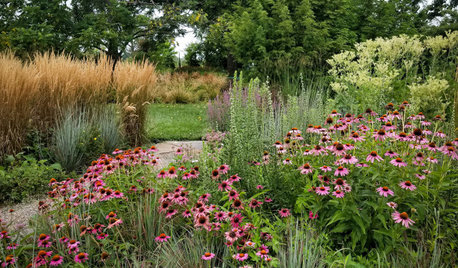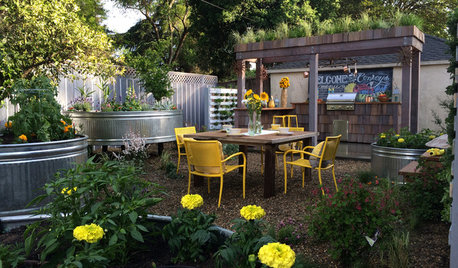anyone hybridizing wild distant crosses or vegetables,fruit,nuts
max - 6a
23 years ago
Related Stories

EDIBLE GARDENSGarden BFFs? Why Your Vegetables Are Begging for Companion Plants
Foster friendships among plants for protection from pests, pollination support and color camaraderie
Full Story
SUMMER FRUITS AND VEGETABLESHow to Grow Your Own Fresh, Sweet Corn
Here's how to plant and care for your own mini cornfield
Full Story
SPRING GARDENINGSummer Crops: How to Grow Strawberries
Pluck your own sweet strawberries right from the garden vine for smoothies, salads or eating then and there
Full Story
GARDENING GUIDES10 Easy Edibles for First-Time Gardeners
Focus on these beginner-friendly vegetables, herbs, beans and salad greens to start a home farm with little fuss
Full Story
GARDENING GUIDESWhat Kind of Roses Should You Grow?
Want to add the beauty of roses to your garden? Find out which ones, from old-fashioned to modern, are right for you
Full Story
FRONT YARD IDEAS10 Ideas for a Front-Yard Edible Garden Your Neighbors Will Love
Choosing attractive, well-mannered plants and sharing the bounty will go a long way toward keeping the peace
Full Story
FALL GARDENING20 Favorite Flowers for the Fall Landscape
Vivid blooms and striking shapes make these annuals and perennials a delight in autumn gardens
Full Story
FARM YOUR YARDHow to Farm Your Parking Strip
Get an up-close look at a thriving street-side edible garden, one of many sprouting up in Seattle
Full Story
GARDENING FOR BUTTERFLIESGardening for the Bees, and Why It’s a Good Thing
When you discover how hard bees work for our food supply, you may never garden without them in mind again
Full Story
FARM YOUR YARDRemake Your Backyard Into a Mini Farm
You can get a taste of country life by line-drying your laundry, growing some produce or going whole hog with the critters
Full StoryMore Discussions






Jan Clark - 9
John - 6b/7a NJ
Related Professionals
Arlington Landscape Architects & Landscape Designers · Lakewood Landscape Architects & Landscape Designers · Middle Island Landscape Architects & Landscape Designers · Waterbury Landscape Contractors · Cicero Landscape Contractors · Fort Atkinson Landscape Contractors · Matteson Landscape Contractors · North Ridgeville Landscape Contractors · Raleigh Landscape Contractors · Seminole Landscape Contractors · Wilsonville Landscape Contractors · Oak Grove Carpenters · Antioch Fence Contractors · Bartlesville Fence Contractors · Statesville Fence ContractorsJon Dixon - Northern California
Eric - 5
pigeons
superseed77
plants1010
boizeau
agrinerd